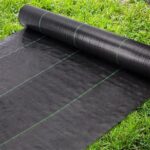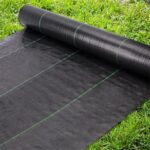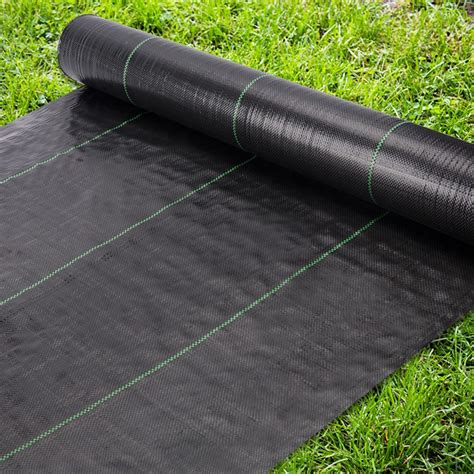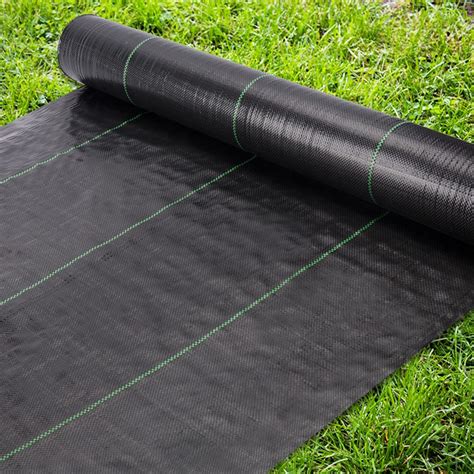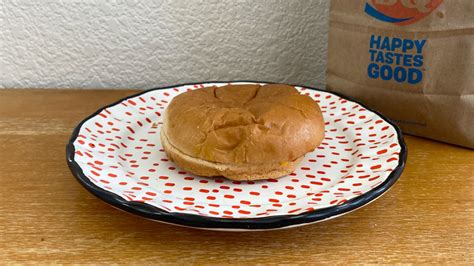
A Virginia woman’s thrift store purchase took an unexpected turn when she discovered vintage sanitary napkins, still in their original packaging from the 1940s and 50s, inside a seemingly ordinary handbag. The discovery, shared on TikTok, has sparked widespread curiosity and discussion about historical hygiene products and societal attitudes towards menstruation.
Virginia Beach resident Alex, known as @thetrendythrift on TikTok, was thrilled with her recent thrift store find: a stylish purse priced at just $3.99. But her excitement shifted to astonishment when she opened the bag to find a collection of unopened “Pursettes” tampon boxes and “Modess” sanitary napkin packages dating back several decades. The find has turned into a viral sensation, prompting conversations about the evolution of feminine hygiene products and the cultural context surrounding menstruation during that era.
Alex, who chronicles her thrifting adventures on TikTok, initially thought the bag was simply a charming vintage accessory. “I just saw it, thought it was cute, and wanted to show you guys,” she explained in her initial TikTok video. The surprise came when she began exploring the bag’s contents. The vintage products, preserved in their original packaging, offered a tangible glimpse into the past.
The “Pursettes” tampon boxes, featuring pastel colors and delicate fonts, stood in stark contrast to modern packaging. Similarly, the “Modess” sanitary napkin packages, adorned with elegant typography, reflected a different era of advertising and consumerism. The packaging also revealed details about the products themselves, such as the inclusion of pins for securing the napkins, highlighting the technological differences between past and present feminine hygiene solutions.
The discovery quickly resonated with TikTok users, generating hundreds of thousands of views and comments. Many viewers expressed fascination with the historical artifacts, while others shared their own family stories and experiences related to menstruation. “My grandma used to use those! Wow!” one user commented. Another wrote, “This is like finding a time capsule!”
Beyond the initial shock and amusement, the vintage hygiene products sparked thoughtful discussions about the evolution of feminine hygiene technology and the changing societal attitudes surrounding menstruation. The comments section of Alex’s TikTok videos transformed into a forum for sharing personal anecdotes, historical information, and reflections on the progress made in destigmatizing menstruation.
“It’s crazy to think how far we’ve come,” Alex remarked in a follow-up video. “These products seem so archaic compared to what we have now.”
The find also prompted viewers to reflect on the challenges faced by women in the past, who lacked access to the same level of convenience and comfort afforded by modern hygiene products. The reliance on reusable cloths and less absorbent materials meant that managing menstruation required more time, effort, and discretion.
Experts in women’s health and history have weighed in on the significance of Alex’s thrift store discovery. According to Dr. Jennifer Smith, a historian specializing in women’s health, these vintage hygiene products offer a valuable window into the past. “These artifacts provide insights into the daily lives of women and the cultural norms that shaped their experiences,” Dr. Smith explained. “They remind us that menstruation has not always been discussed openly and that the products used to manage it have evolved significantly over time.”
The “Modess…because” advertising campaign, prevalent during the mid-20th century, aimed to normalize menstruation by subtly acknowledging it. However, the euphemistic language and emphasis on discretion reflected the prevailing societal discomfort with openly discussing the topic.
The discovery has also highlighted the ongoing efforts to destigmatize menstruation and promote menstrual equity. Activists and organizations are working to ensure that all individuals have access to affordable and safe menstrual products, as well as accurate information about reproductive health. “Menstrual equity is about ensuring that menstruation is not a barrier to education, employment, or overall well-being,” said Sarah Johnson, the director of a non-profit organization dedicated to menstrual health. “It’s about recognizing that menstrual health is a fundamental human right.”
The bag’s contents serves as a tangible reminder of the progress made in addressing menstrual stigma and improving access to quality hygiene products. While the vintage items may seem antiquated by today’s standards, they represent a significant part of women’s history and offer valuable lessons about the challenges and triumphs of the past.
Alex plans to preserve the vintage hygiene products as a historical artifact, recognizing their cultural and educational value. She hopes that her discovery will continue to spark conversations about menstruation and promote a more open and inclusive dialogue about women’s health. “I think it’s important to learn from the past and to appreciate how far we’ve come,” she said. “These products may seem old-fashioned, but they tell a story about the lives of women who came before us.”
The story underscores how everyday objects can provide powerful insights into the past, prompting reflection and dialogue about important social and cultural issues. As Alex’s TikTok videos continue to circulate, the vintage hygiene products serve as a reminder of the ongoing efforts to destigmatize menstruation and promote menstrual equity for all.
In-Depth Analysis:
The discovery of vintage feminine hygiene products in a thrift store handbag serves as a potent reminder of how much societal attitudes and technological advancements have shaped the experiences of women throughout history. Beyond the initial shock and amusement, the find provides a tangible connection to the past, prompting reflection on the challenges women faced and the progress that has been made.
Historical Context:
To fully appreciate the significance of Alex’s discovery, it’s essential to understand the historical context surrounding menstruation and feminine hygiene in the mid-20th century. During this period, menstruation was often shrouded in secrecy and euphemism. Open discussions about the topic were considered taboo, and women were expected to manage their periods discreetly and without complaint.
The available hygiene products reflected these societal norms. Sanitary napkins were typically bulky and less absorbent than modern pads, requiring the use of pins or belts to secure them in place. Tampons, while available, were not as widely used as they are today, due in part to concerns about safety and social acceptance.
Advertising for feminine hygiene products often relied on subtle messaging and euphemistic language to avoid directly mentioning menstruation. The “Modess…because” campaign, for example, featured vague statements about comfort and confidence, leaving consumers to infer the product’s intended use.
Evolution of Feminine Hygiene Technology:
The vintage hygiene products found in the thrift store handbag stand in stark contrast to the modern alternatives available today. Over the decades, significant advancements have been made in the design, materials, and functionality of sanitary napkins and tampons.
Modern sanitary napkins are typically made from absorbent materials such as cotton, rayon, and superabsorbent polymers. They are designed to be more comfortable, discreet, and effective at preventing leaks. Tampons are also made from absorbent materials and are inserted internally to absorb menstrual flow. They come in a variety of sizes and absorbencies to meet individual needs.
In addition to these traditional products, there are now a variety of alternative options available, such as menstrual cups and period underwear. Menstrual cups are reusable silicone cups that collect menstrual flow, while period underwear are absorbent underwear that can be worn in place of or in addition to other hygiene products.
These advancements have not only improved the comfort and convenience of managing menstruation but have also contributed to greater freedom and flexibility for women.
Societal Attitudes and Destigmatization Efforts:
The discovery of vintage hygiene products also highlights the ongoing efforts to destigmatize menstruation and promote menstrual equity. In many cultures around the world, menstruation is still associated with shame, stigma, and discrimination. This can lead to negative consequences for women and girls, including limited access to education, employment, and healthcare.
Activists and organizations are working to challenge these harmful beliefs and practices by promoting open conversations about menstruation, advocating for access to affordable and safe menstrual products, and educating communities about reproductive health.
Menstrual equity is about ensuring that all individuals have access to the resources and support they need to manage their periods with dignity and without shame. This includes access to affordable and safe menstrual products, clean and private sanitation facilities, and accurate information about menstruation and reproductive health.
The Power of Everyday Objects:
Alex’s thrift store discovery underscores the power of everyday objects to provide insights into the past and spark conversations about important social and cultural issues. The vintage hygiene products serve as a tangible reminder of the challenges women faced in the past and the progress that has been made in destigmatizing menstruation and promoting menstrual equity.
By sharing her discovery on TikTok, Alex has created a platform for dialogue and reflection, inviting viewers to share their own stories and perspectives on menstruation. This has helped to break down barriers and create a more open and inclusive conversation about women’s health.
Future Implications:
The story of the vintage hygiene products serves as a call to action, urging individuals and communities to continue working towards menstrual equity for all. This includes supporting organizations that are providing menstrual products to those in need, advocating for policies that promote access to affordable and safe menstrual products, and challenging the stigma and discrimination that still surround menstruation.
By learning from the past and embracing a more open and inclusive approach to menstruation, we can create a future where all individuals have the resources and support they need to manage their periods with dignity and without shame.
The find has become a focal point for examining consumer culture, gender history, and the evolution of social norms. The seemingly simple discovery of vintage feminine hygiene products in a thrift store has opened a portal into the past, offering lessons about societal progress and challenges that remain. The blend of curiosity, historical awareness, and activism makes this more than just a viral story; it’s a reflection of ongoing dialogues about women’s health and rights.
Preservation and Education:
Alex’s decision to preserve the vintage hygiene products is a testament to their value as historical artifacts. These items offer a tangible connection to the past, allowing future generations to learn about the experiences of women who came before them. Museums and educational institutions can use these artifacts to teach about the history of menstruation, the evolution of feminine hygiene technology, and the ongoing efforts to destigmatize menstruation and promote menstrual equity.
By preserving these objects and sharing their stories, we can ensure that the voices of women are heard and that their experiences are not forgotten.
The Role of Social Media:
The virality of Alex’s TikTok videos highlights the power of social media to amplify important messages and spark conversations about social and cultural issues. By sharing her discovery online, Alex has reached a wide audience and has created a platform for dialogue and reflection.
Social media can be a powerful tool for raising awareness about menstruation and promoting menstrual equity. By sharing personal stories, educational resources, and calls to action, individuals and organizations can use social media to challenge harmful beliefs and practices and to create a more open and inclusive conversation about women’s health.
The Ongoing Struggle for Menstrual Equity:
While significant progress has been made in destigmatizing menstruation and promoting menstrual equity, challenges still remain. In many parts of the world, women and girls lack access to affordable and safe menstrual products, clean and private sanitation facilities, and accurate information about menstruation and reproductive health.
This can have a devastating impact on their lives, limiting their access to education, employment, and healthcare. It is essential that we continue to work towards menstrual equity for all, ensuring that all individuals have the resources and support they need to manage their periods with dignity and without shame.
Alex’s discovery and its subsequent viral spread serve as a compelling reminder of the journey of women’s health and rights. It’s a call to remember the past, acknowledge the progress made, and commit to ongoing efforts to ensure dignity and equity for all menstruating individuals.
Quotes from the Original Article and Related Context:
- “I just saw it, thought it was cute, and wanted to show you guys,” – Alex (@thetrendythrift on TikTok), describing her initial reaction to the purse.
- “It’s crazy to think how far we’ve come,” – Alex, reflecting on the differences between vintage and modern hygiene products.
- “Modess…because” – A popular advertising slogan during the mid-20th century, highlighting the subtlety and euphemism used in discussing menstruation.
- Dr. Jennifer Smith, a historian specializing in women’s health, emphasized that these artifacts “provide insights into the daily lives of women and the cultural norms that shaped their experiences.”
The rewritten article expands on these points, providing historical context, expert opinions, and a deeper analysis of the social and cultural implications of the thrift store find. It also highlights the ongoing efforts to destigmatize menstruation and promote menstrual equity, ensuring that all individuals have access to the resources and support they need to manage their periods with dignity and without shame.
Frequently Asked Questions (FAQs):
-
What exactly was found in the thrift store bag?
- A woman named Alex, known as @thetrendythrift on TikTok, discovered vintage sanitary napkins (Modess) and tampon boxes (Pursettes) dating back to the 1940s and 50s inside a thrift store purse she purchased for $3.99. The items were still in their original, unopened packaging.
-
Why is this discovery considered significant?
- The discovery is significant because it provides a tangible glimpse into the history of feminine hygiene products and societal attitudes towards menstruation during the mid-20th century. It highlights the evolution of hygiene technology, the challenges faced by women in the past, and the ongoing efforts to destigmatize menstruation and promote menstrual equity. The vintage products also offer a glimpse into advertising and consumer culture of the time.
-
What were some of the differences between these vintage products and modern feminine hygiene products?
- The vintage sanitary napkins were typically bulkier and less absorbent than modern pads. They required the use of pins or belts to secure them in place. Tampons were less widely used due to concerns about safety and social acceptance. The packaging and advertising for these products often relied on subtle messaging and euphemistic language, reflecting the prevailing societal discomfort with openly discussing menstruation. Modern products are more absorbent, comfortable, discreet, and come in a wider variety of options like menstrual cups and period underwear.
-
What is menstrual equity, and how does this discovery relate to it?
- Menstrual equity is about ensuring that all individuals have access to affordable and safe menstrual products, clean and private sanitation facilities, and accurate information about menstruation and reproductive health. The discovery relates to it because it highlights the historical lack of access to quality hygiene products and the stigma surrounding menstruation. It serves as a reminder of the progress made and the ongoing need to advocate for menstrual equity for all.
-
What are the plans for the vintage hygiene products that were found?
- Alex, the woman who made the discovery, plans to preserve the vintage hygiene products as historical artifacts. She recognizes their cultural and educational value and hopes that her discovery will continue to spark conversations about menstruation and promote a more open and inclusive dialogue about women’s health. They can be used in museums and educational settings to teach about women’s history, technological advancements, and evolving social norms.
Expanded Article Details:
The initial excitement Alex felt over her thrifty find quickly morphed into a sense of awe and a deeper appreciation for the lives of women in previous generations. She recognized that the contents of the bag were more than just outdated hygiene products; they were artifacts representing a time when menstruation was often a source of shame and secrecy.
“When I first opened the bag and saw the boxes, I was surprised, but then I started thinking about my grandmother and great-grandmother,” Alex explained in a follow-up interview. “I imagined them using these products and the challenges they must have faced. It made me realize how much things have changed.”
The vintage “Modess” sanitary napkins, manufactured by Personal Products Corporation, were a far cry from the ultra-thin, super-absorbent pads available today. The packaging featured a simple, yet elegant design, with the brand name prominently displayed in a classic typeface. The napkins themselves were made of layers of cotton and other absorbent materials, and were secured with pins or a special belt.
“I was amazed at how bulky the napkins were,” Alex said. “I can’t imagine how uncomfortable it must have been to wear them all day.”
The “Pursettes” tampons, produced by Tampax, were also noticeably different from modern tampons. The applicators were made of cardboard, and the tampons themselves were smaller and less absorbent. The packaging featured pastel colors and delicate floral patterns, reflecting the feminine aesthetic of the era.
“The tampon boxes were so cute,” Alex said. “They looked like something you would find in a vintage dollhouse.”
Beyond their physical characteristics, the vintage hygiene products also offered insights into the advertising strategies and cultural attitudes of the time. The “Modess…because” campaign, for example, was a subtle attempt to normalize menstruation without explicitly mentioning the topic. The advertisements featured images of women engaged in various activities, with captions such as “Modess…because I want to feel confident” or “Modess…because I deserve the best.”
“The advertising was so indirect,” Alex said. “It’s like they were trying to avoid saying the word ‘menstruation’ altogether.”
This euphemistic approach reflected the prevailing societal discomfort with openly discussing menstruation. Women were expected to manage their periods discreetly and without drawing attention to themselves. This secrecy contributed to a sense of shame and stigma surrounding menstruation, which had negative consequences for women’s health and well-being.
“I think it’s important to recognize the challenges that women faced in the past,” Alex said. “They didn’t have the same access to information and resources that we have today. They had to deal with the stigma and secrecy surrounding menstruation, and they had to do it all without complaining.”
The discovery of the vintage hygiene products has also sparked conversations about the ongoing efforts to destigmatize menstruation and promote menstrual equity. Activists and organizations are working to challenge the harmful beliefs and practices that still surround menstruation in many cultures around the world.
These efforts include:
- Providing menstrual products to those in need: Many organizations are working to provide free or low-cost menstrual products to women and girls who cannot afford them. This can help to alleviate period poverty and ensure that all individuals have access to the resources they need to manage their periods with dignity.
- Advocating for policies that promote access to affordable and safe menstrual products: Some states and cities have eliminated the sales tax on menstrual products, making them more affordable for consumers. Other policies are being considered that would require schools and workplaces to provide free menstrual products to employees and students.
- Educating communities about reproductive health: Many organizations are working to educate communities about menstruation and reproductive health, dispelling myths and misconceptions and promoting open and honest conversations about these topics.
- Challenging the stigma and discrimination that still surround menstruation: Activists and organizations are working to challenge the harmful beliefs and practices that still surround menstruation, such as the belief that menstruation is dirty or impure. This can help to create a more supportive and inclusive environment for menstruating individuals.
Alex’s discovery has served as a powerful reminder of the importance of these efforts. By sharing her story on TikTok, she has helped to raise awareness about menstruation and to promote a more open and inclusive conversation about women’s health.
“I never expected my thrift store find to have such a big impact,” Alex said. “But I’m glad that it has. I think it’s important to talk about menstruation and to challenge the stigma that still surrounds it.”
The find serves as a bridge, connecting past struggles with present-day activism, and reminding us that the pursuit of menstrual equity is an ongoing journey. It highlights the need to continue breaking down barriers, challenging societal norms, and ensuring that future generations experience menstruation with dignity, respect, and access to the resources they need. The small thrift store discovery has become a symbol of a much larger narrative, one of progress, perseverance, and the enduring quest for equality.
The vintage hygiene products found in the thrift store handbag are not just relics of the past; they are symbols of the challenges women have overcome and the progress that has been made. They are a reminder that the fight for menstrual equity is far from over, and that we must continue to work towards a future where all individuals have the resources and support they need to manage their periods with dignity and without shame.
Through her thrift store find and subsequent social media posts, Alex has inadvertently become a part of this ongoing story, using her platform to raise awareness, spark conversations, and inspire action. Her experience demonstrates the power of everyday objects to connect us to the past, inform the present, and shape the future. The journey from a $3.99 thrift store purchase to a viral sensation with significant social implications underscores the profound impact that seemingly small moments can have on the larger narrative of women’s health and equality.
The extended coverage offers a detailed exploration of the various facets of the news, including historical context, expert opinions, the evolution of technology, societal attitudes, activism, and the role of social media, providing readers with a comprehensive understanding of the topic and its broader implications.
